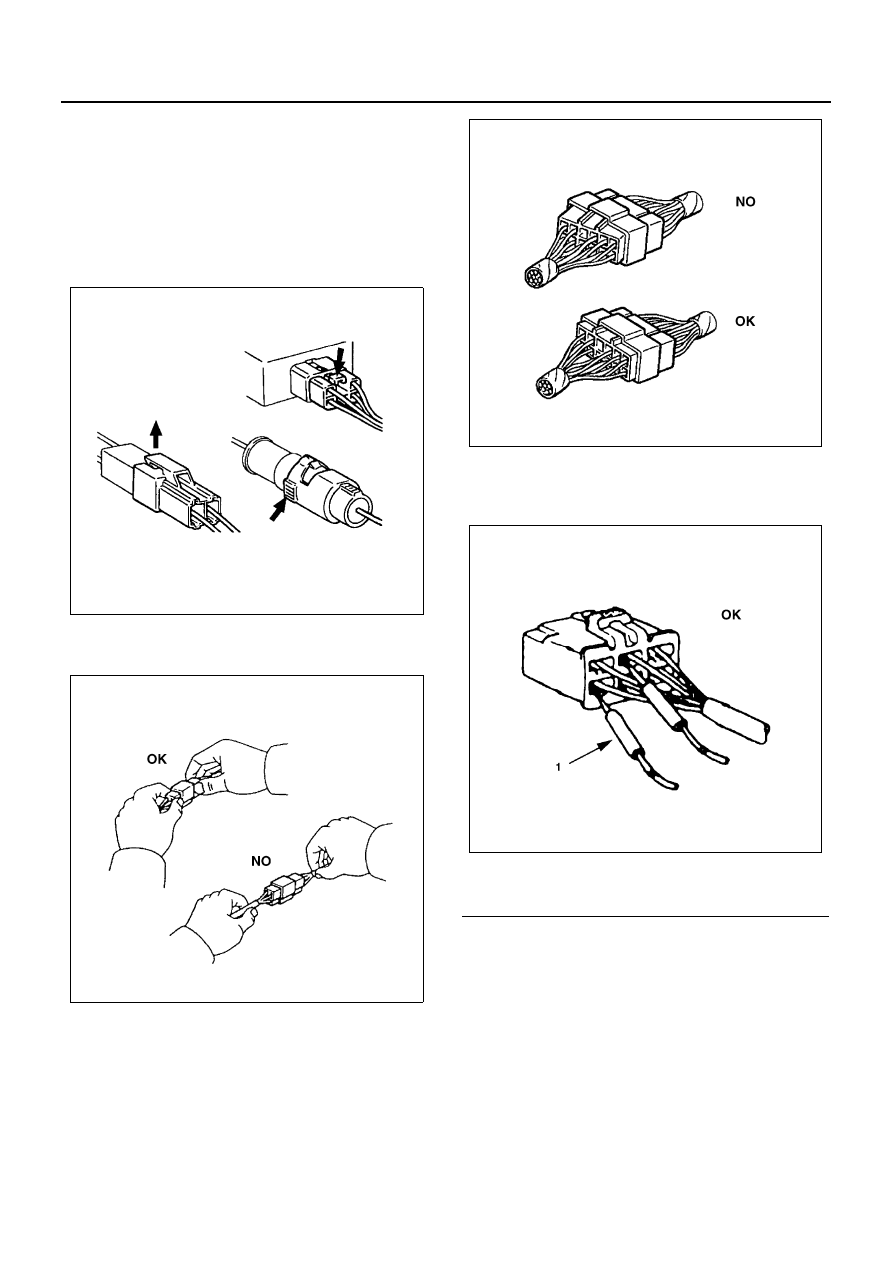Isuzu N-Series. Manual - part 417

6E-4 EMISSION AND ELECTRICAL DIAGNOSIS
Some tang locks are released by pulling them towards
you.
Other tang locks are released by pressing them forward.
Determine which type of tang lock is on the connector
being handled.
Firmly grasp both sides (male and female) of the con-
nector.
Release the tang lock and carefully pull the two halves
of the connector apart.
Never pull on the wires to separate the connectors. This
will result in wire breakage.
Connecting the Connector
Firmly grasp both sides (male and female) of the con-
nector. Be sure that the connector pins and pin holes
match. Be sure that both sides of the connector are
aligned with each other. Firmly but carefully push the
two sides of the connector together until a distinct click
is heard.
Connector Inspection
Use a circuit tester to check the connector for continuity.
Insert the test probes from the connector wire side.
Never insert the circuit tester test probes into the con-
nector open end to test the continuity. Broken or open
connector terminals will result.
N6A1106E
N6A1107E
Legend
1. Test probe
N6A1108E
N6A1109E